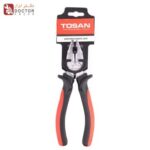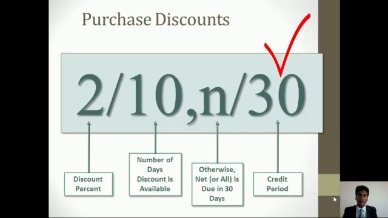
Even small business accountants appreciate the automated reconciliation feature in QuickBooks Online that can have your accounts reconciled in minutes, not hours. The bank will debit your business account only when they’ve paid these issued checks, meaning there is a time delay between the issuing of checks and their presentation to the bank. These time delays are responsible for the differences that arise in your cash book balance and your passbook balance. Typically, the difference between the cash book and passbook balance arises due to the items that appear only in the passbook. So it makes sense to record these items in the cash book first in order to determine the adjusted balance of the cash book.
The journal entry goes into a special expense account called Reconciliation Discrepancies. We’re firm believers in the Golden Rule, which is why editorial opinions are ours alone and have not been previously reviewed, approved, or endorsed by included advertisers. The Ascent, a Motley Fool service, does not cover all offers on the market.
Common errors and how to avoid them
There are times when your business will deposit a check or draw a bill of exchange discounted with the bank. These deposited checks or discounted bills of exchange drawn by your business may get dishonored on the date of maturity. As a balance sheet vs. profit and loss statement: what’s the difference result, the bank debits the amount against such dishonored cheques or bills of exchange to your bank account. All of your bank and credit card transactions automatically sync to QuickBooks to help you seamlessly track your income & expenses. If you reconciled a transaction by mistake, here’s how to unreconcile it.
There are times when the bank may charge a fee for maintaining your account, which will typically be deducted automatically from your account. Therefore, when preparing a bank reconciliation statement you must account for any fees deducted from your account. Once you complete the bank reconciliation statement at the end of the month, you need to print the bank reconciliation report and keep it in your monthly journal entries as a separate document. This document will make auditors aware of the reconciled information at a later date.
Step 1: Make sure you have everything needed to reconcile in QuickBooks
Such errors are committed while recording the transactions in the cash book, so the balance as per the cash book will differ from the passbook. It is important to note that it takes a few days for the bank to clear the checks. This is especially common in cases where the paycheck protection program check is deposited at a different bank branch than the one at which your account is maintained, which can lead to the difference between the balances. This way, the number of items that can cause the difference between the passbook and the cash book balance is reduced. And as a result, it gets easier to ascertain the correct balance in the balance sheet. This is a simple data entry error that occurs when two digits are accidentally reversed (transposed) when posting a transaction.
Review cleared transactions
For example, if you pay your vendors with a check run on the last business day of the month, none of those checks will have cleared the bank by the time you’re ready to reconcile your account. In order to prepare a bank reconciliation statement, you’ll need to obtain both the current and the previous month’s bank statements as well as the cash book. The purpose of reconciling bank statements with your business’ cash book is to ensure that the balance as per the passbook matches the balance as per the cash book.
- For example, if your statement displays a bank fee or other charge, it’s likely the charge has not been recorded.
- Typically, the difference between the cash book and passbook balance arises due to the items that appear only in the passbook.
- When you finish reconciling accounts, QuickBooks automatically generates a reconciliation report.
- It summarizes the beginning and ending balances, and it lists which transactions were cleared and which were left uncleared when you reconciled.
- If you’re not careful, your business checking account could be subject to overdraft fees.
- There are a few reasons your QuickBooks data may not match your account statements, including bank service charges, checks that haven’t cleared, and transactions that haven’t been entered in QuickBooks yet.
Step 1: Match Each Item on the Bank Statement to the Cash Account
Your bank may collect interest and dividends on your behalf and credit such an amount to your bank account. Likewise, ‘credit balance as per cash book’ is the same as ‘debit balance as per passbook’ means the withdrawals made by a company from a bank account exceed deposits made. In QuickBooks Online, you ward’s 50 property can choose to reconcile any of your connected accounts, as well as bank accounts that are not connected. If you want to reconcile your checking account, you would just choose checking from the drop-down menu. You can also reconcile various asset and liability accounts using the reconciliation feature.

This lets you write a check or enter a bill to pay to cover the outstanding balance. Employees log their hours, you review and approve them, and QuickBooks does the rest. Cut checks or pay employees via direct deposit, issue W2s at tax time, and file taxes electronically – all from QuickBooks.
For example, you wrote a check for $32, but you recorded it as $23 in your accounting software. Note that this process is exclusively for reconciliations performed by hand. If you use accounting software, then your reconciliation is done largely for you.
